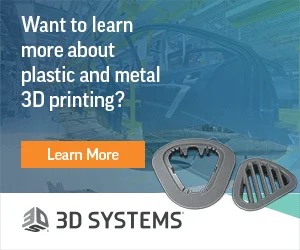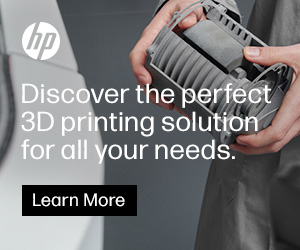Polymaker Improves The Polysher for Smoother 3D Printed Surfaces
Polymaker burst on the scene in 2012 as a company dedicated to creating high quality materials for use in desktop 3D printers. They quickly became known for their PolyMax, PolyFlex, and PolyWood filaments, which were designed to fill the gap that the founders, Xiofan Luao, Hang Qu, and Pengyu Lu, saw in the materials available for those desktop printers. In 2015, Polymaker worked with Covestro, an advanced polymer developer, to add PC-Plus and PC-Max filaments to their line of offerings.
 In 2016, they launched a Kickstarter campaign to gather the funds necessary to release the Polysher, another solution oriented development, designed to smooth the surfaces of 3D printed objects. This funding effort was extremely successful, raising $433,860, an indication of the need for just such a product. The recognition that they have garnered for their continued innovation has not only come from an outpouring of small donors in crowd funding sources, but from sizable investments pledged in equity funding efforts led by a top venture capital firm in China.
In 2016, they launched a Kickstarter campaign to gather the funds necessary to release the Polysher, another solution oriented development, designed to smooth the surfaces of 3D printed objects. This funding effort was extremely successful, raising $433,860, an indication of the need for just such a product. The recognition that they have garnered for their continued innovation has not only come from an outpouring of small donors in crowd funding sources, but from sizable investments pledged in equity funding efforts led by a top venture capital firm in China.
Since their inception, the company has repeatedly been in the news for its innovation. Back in 2016, they released the Polysher, which promised to help 3D printed parts look more like those created with injection molding, that is to say, with a surface free of the layer striations left as an after effect of the very process by which 3D printing builds a up a product. When used in conjunction with Polymaker’s PolySmooth filament, this desktop smoothing machine, in the words of Xiaofan Luo, would mean a shift in what kinds of products could be expected from a desktop printer:
“For extrusion-based 3D printing, the poor surface quality has always been a prominent disadvantage which separates 3D printed parts and parts made by conventional manufacturing methods. What we want to do is to bridge this gap, brining 3D printing to the realm of making final products, not just prototypes.”
 The Polysher looks somewhat like a kitchen appliance and works by creating a very fine mist of isopropyl alcohol (IPA) onto an object placed within that has been printed with PolySmooth filament. This specially designed filament demonstrates excellent solubility in the presence of IPA and virtually erases the layer lines, creating a single smooth surface. This is a distinct improvement over the alternative which is hand sanding and hoping.
The Polysher looks somewhat like a kitchen appliance and works by creating a very fine mist of isopropyl alcohol (IPA) onto an object placed within that has been printed with PolySmooth filament. This specially designed filament demonstrates excellent solubility in the presence of IPA and virtually erases the layer lines, creating a single smooth surface. This is a distinct improvement over the alternative which is hand sanding and hoping.
In the year since they released the Polysher, the team at Polymaker have been at work on an improved version of the nebulizer component itself. The nebulizer is the part that creates the mist and sprays it into the Polysher box by vibrating a thin membrane many thousands of times per second. The improvements to the nebulizer come in the form of the creation of a new membrane that not only improves the reliability of the process, but because it is able to deliver a denser mist at a higher speed, allows for an increase in output, thereby lessening the time necessary to create the smooth surface. As Luo explained:
“The redesigned membrane achieves better resonance stability and a smoother vibration for improved atomization. Furthermore, the definition of resonance is now finer which means that it is easier for the Polysher to optimize the mist creation, thus [reducing the number of] warning alarms. This optimization results in a denser, more concentrated mist.”
In this recently released video, a demonstration is given showing the process and results of the new nebulizer. It is easy to see the greater density of the mist produced by the new nebulizer. Unfortunately, the two products that are polished in the video are different in color, one construction worker orange and the other black, making it difficult to see the difference in results on the prints themselves.
The nebulizer itself is a consumable and will now be available through the Polymaker website in packs of 2 for under $20.
What do you think of this news? Let us know your thoughts; join the discussion of this and other 3D printing topics at 3DPrintBoard.com or share your thoughts below.
Subscribe to Our Email Newsletter
Stay up-to-date on all the latest news from the 3D printing industry and receive information and offers from third party vendors.
You May Also Like
3D Printing Webinar and Event Roundup: March 30, 2024
Things are slowing down a little this week, but there are still several interesting 3D printing webinars and events for you to attend. Read on for all the details! 3D...
Mark Peng Tackles Both Sides of the SLA 3D Printing Market: Printers and Materials
Anyone who has been involved in stereolithography (SLA) for the past decade or more has witnessed the technology’s rapid evolution. The broader category, vat photopolymerization (VP), has grown to include...
Why ‘Chemistry for Dentistry’ Is Really Revolutionary – AMS Speaker Spotlight
Do you remember when the boundaries of the term “revolutionary” was limited to historic achievements like a war of independence, the polio vaccine, or the invention of the internet. In...
Ash’s Declassified Survival Guide to Running a 3D Printing Makerspace
So, you just got a new job running a makerspace, or you’re interested in starting one. Great! But, now what? A makerspace is essentially a place where you make things,...

































